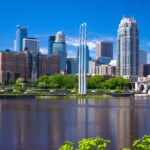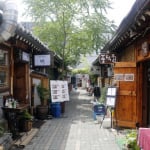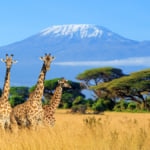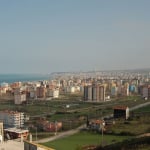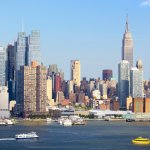Name: Jeongbang Waterfall (정방폭포 / Cheonbangpokpo)
Address: 37 Chilsimni-ro 214beon-gil, Seogwipo-si, Jeju-do, South Korea
Official Website: Visit Jeju
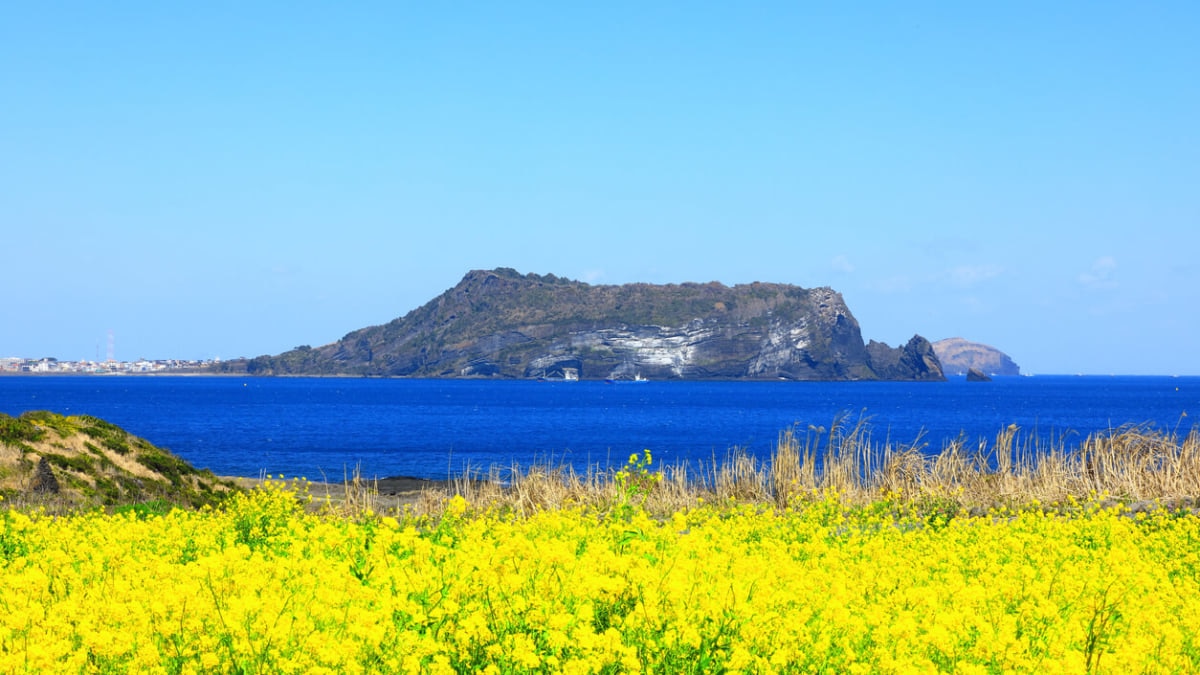
19 Recommended Tourist Attractions in Jeju Island | South Korea Jeju Island Travel
Jeju Island is a popular resort island known for being a UNESCO World Natural Heritage site, a filming location for Korean dramas, and home to stylish cafés created by K-POP idols. It takes just under two hours to fly from Japan to Jeju Airport. The climate in Jeju is similar to that of Tokyo, but since South Korea experiences harsh winters, Jeju's mild weather has earned it the nickname "Hawaii of Korea."
Let's explore the charm of Jeju Island by checking out its popular tourist spots. The island offers a different atmosphere from mainland Korea! With its breathtaking natural beauty, delicious local cuisine, and unique activities, Jeju Island has plenty to offer. Be sure to use this guide as a reference for your trip!
table of contents
[x] close
19 Recommended Tourist Attractions in Jeju Island | South Korea Jeju Island Travel
- 1. Jeongbang Waterfall (정방폭포 / Cheonbangpokpo)
- 2. Seongsan Ilchulbong (성산일출봉 / Seongsan Ilchulbong)
- 3. Bunker de Lumières (빛의 벙커 / Bichui Beongkeo)
- 4. Jeju OSULLOC Tea Museum (오설록 티 뮤지엄)
- 5. Aqua Planet Jeju (아쿠아플라넷 제주)
- 6. Bukchon Dolharbang Park (북촌돌하르방공원 / Bukchon Dolharbang Gongwon)
- 7. ARTE MUSEUM Jeju (아르떼뮤지엄 제주)
- 8. Daepo Jusangjeolli Cliff (대포 주상절리대)
- 9. Dongmun Market (동문시장)
- 10. Hallasan National Park (한라산 / Hallasan)
- 11. Yongduam Rock (용두암 / Yongduam)
- 12. Jeju Folklore and Natural History Museum (제주 민속자연사 박물관)
- 13. Udo Island (제주도 우도 / Udo)
- 14. Eco Land Theme Park (에코랜드테마파크 / Eco Land)
- 15. Jeju Haenyeo Museum (해녀박물관 / Jeju Haenyeo Museum)
- 16. Manjanggul Cave (만장굴 / Manjanggul)
- 17. Hamdeok Beach (함덕해수욕장 / Hamdeok Beach)
- 18. Seongeup Folk Village (성읍민속마을 / Seongeup Folk Village)
- 19. Cheonjiyeon Waterfall (천지연폭포 / Cheonjiyeon Pokpo)
- ◎ Recommended Tourist Spots in Jeju Island
1. Jeongbang Waterfall (정방폭포 / Cheonbangpokpo)

Located in the southern part of Jeju Island, Jeongbang Waterfall is a rare waterfall where the water flows directly into the sea. Waterfalls that pour directly into the ocean are called "coastal waterfalls," and in Japan, Yakushima's "Toroki Waterfall" is a well-known example.
Jeongbang Waterfall has a drop of approximately 23 meters. When the water flow is strong, it creates an impressive sight, with mist and splashes reaching visitors. Depending on the tide and water volume, the waterfall's appearance varies. You can descend the stairs to get close to the basin for a more immersive view.
2. Seongsan Ilchulbong (성산일출봉 / Seongsan Ilchulbong)
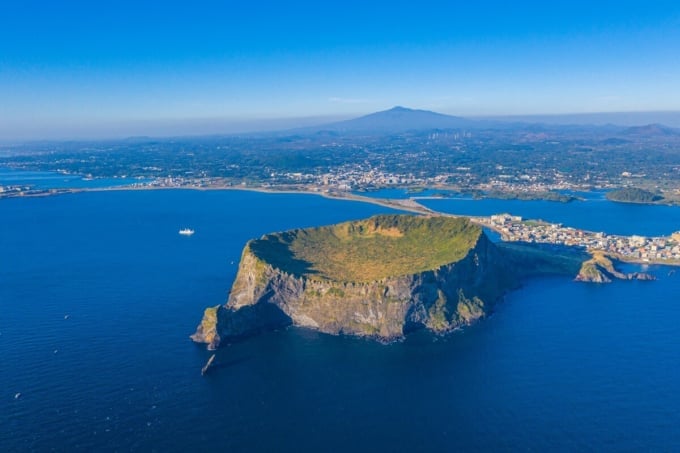
Seongsan Ilchulbong, a dramatic cliff formation at the easternmost point of Jeju Island, is one of the island’s most famous tourist attractions. Formed by a volcanic eruption around 5,000 years ago, it is a UNESCO World Heritage Site under the designation "Jeju Volcanic Island and Lava Tubes."
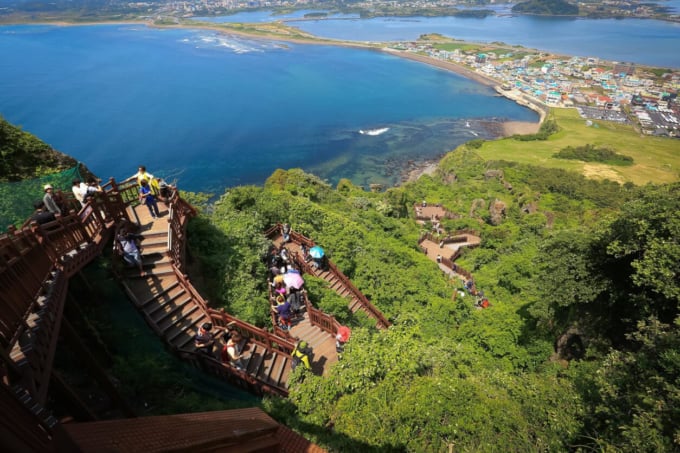
From the parking lot, a gentle slope leads to a set of stairs that ascend to the summit. The climb to the 182-meter-high peak takes about 30 minutes. The pathway is well-maintained, making it easy to walk—even in sandals. Several viewing spots along the way allow visitors to enjoy the scenery at a leisurely pace.
At the summit, you can see the crater of Seongsan Ilchulbong and take in a breathtaking 360-degree panoramic view. This UNESCO World Heritage Site is also counted among Jeju’s "Ten Scenic Wonders," making it a must-visit destination.
Name: Seongsan Ilchulbong (성산일출봉 / Seongsan Ilchulbong)
Address: 284-12 Ilchul-ro, Seongsan-eup, Seogwipo-si, Jeju-do, South Korea
3. Bunker de Lumières (빛의 벙커 / Bichui Beongkeo)
Located in the eastern part of Jeju Island, Bunker de Lumières is an immersive media art gallery featuring music and laser graphics. The gallery hosts exhibitions showcasing renowned artists such as Klimt and Van Gogh, with different artists' works displayed for a limited time. If you visit Jeju Island while an exhibition is ongoing, this spot is worth a visit.
Interestingly, Bunker de Lumières was originally a national telecommunications facility used to manage undersea optical cables. After being renovated, it was transformed into an art gallery, making its history just as fascinating as the exhibits.
Name: Bunker de Lumières (빛의 벙커 / Bichui Beongkeo)
Address: 2039-22 Goseong-ri, Seongsan-eup, Seogwipo-si, Jeju-do, South Korea
Official Website: Bunker de Lumières
4. Jeju OSULLOC Tea Museum (오설록 티 뮤지엄)
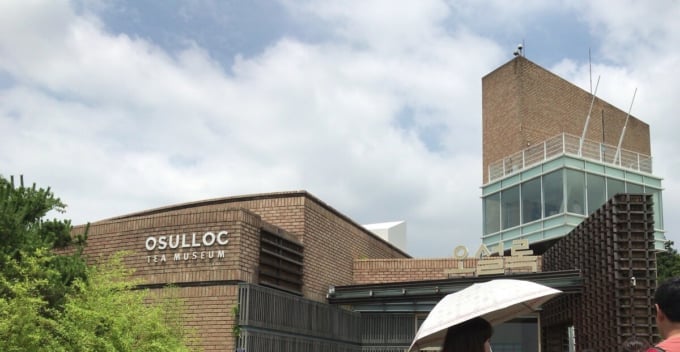
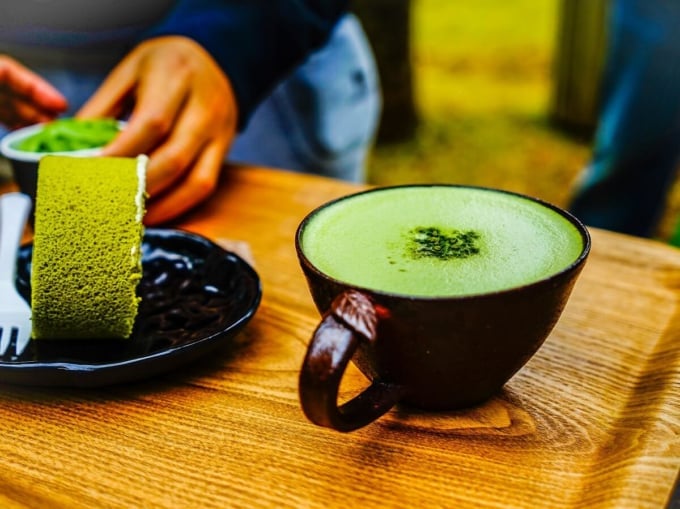
In the western part of Jeju Island, surrounded by vast tea fields, lies a famous filming location of the Korean drama The Legend (Taewangsasingi).
At the OSULLOC Tea Museum, visitors can explore cup art galleries and exhibitions showcasing Korean tea culture. This is a great place to learn about Korea’s traditional tea customs. After the tour, you can visit the gift shop for some shopping or enjoy a tea break at the café. The menu offers delicious options like matcha cake, matcha ice cream, and various tea-based drinks.
Name: Jeju OSULLOC Tea Museum (오설록 티 뮤지엄 / Jeju OSULLOC Tea Museum)
Address: 15 Sinhwayeoksa-ro, Andeok-myeon, Seogwipo-si, Jeju-do, South Korea
Official Website: OSULLOC Tea Museum
5. Aqua Planet Jeju (아쿠아플라넷 제주)
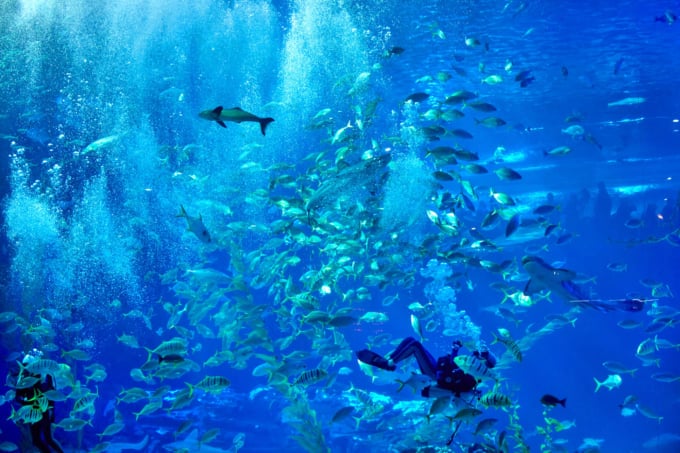
Located about 2 km south of Seongsan Ilchulbong, Aqua Planet Jeju is one of the largest aquariums in Asia, both in tank size and number of marine species.
Here, you can observe marine life from Jeju’s waters as well as major oceanic regions, including the Atlantic, Arctic, Indian, Pacific, and Southern Oceans.
The dolphin and seal performance shows are especially popular among families with children. The facility also includes a Kids’ Zone and an educational science section explaining marine ecosystems. With so much to explore, you could easily spend an entire day here!
Name: Aqua Planet Jeju (아쿠아플라넷 제주)
Address: 95 Seopjikoji-ro, Seongsan-eup, Seogwipo-si, Jeju-do, South Korea
Official Website: Aqua Planet Jeju
6. Bukchon Dolharbang Park (북촌돌하르방공원 / Bukchon Dolharbang Gongwon)
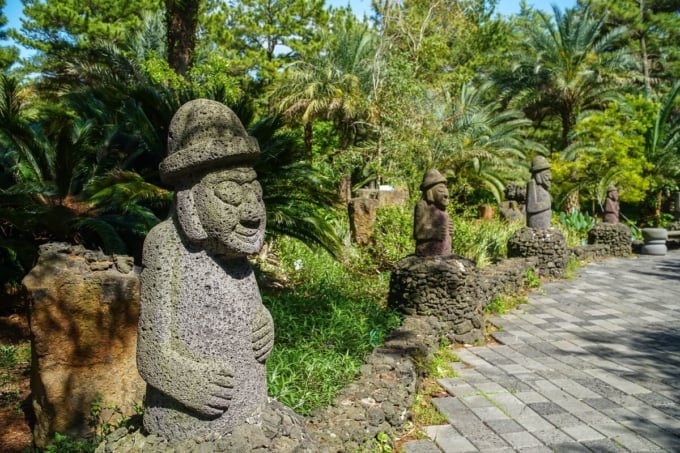
Dolharbang, the stone grandpa statues, are a cultural symbol of Jeju Island and have been designated as a regional folklore heritage. Often referred to as Jeju’s Moai statues, these guardian figures are cherished by locals.
At Bukchon Dolharbang Park, you can learn about their history while enjoying various styles of Dolharbang—traditional, modern artistic versions, and even playful ones designed for fun photo opportunities.
Name: Bukchon Dolharbang Park (북촌돌하르방공원 / Bukchon Dolharbang Gongwon)
Address: 70 Bukchonseo 1-gil, Jochon-eup, Jeju-si, Jeju-do, South Korea
7. ARTE MUSEUM Jeju (아르떼뮤지엄 제주)
Opened on September 30, 2020, ARTE MUSEUM Jeju is an immersive art museum where visitors can experience art through light, sound, and scent.
The museum features stunning media art exhibitions inspired by nature, including Beach, Wave, Waterfall, Garden, and Thunder. Using the latest technology, these exhibits create a surreal and breathtaking experience.
Name: ARTE MUSEUM Jeju (아르떼뮤지엄 제주 / ARTE MUSEUM)
Address: 478 Eorimbi-ro, Aewol-eup, Jeju-si, Jeju-do, South Korea
Official Website: ARTE MUSEUM
8. Daepo Jusangjeolli Cliff (대포 주상절리대)

The Daepo Jusangjeolli Cliff is a massive columnar basalt formation stretching along 2 km of the southwestern coast of Jeju Island. It is the largest of its kind in Korea and has been designated as a Natural Monument.
Visitors can view the cliffs from walking trails and observation decks, or take a boat tour for a different perspective. One of the most famous rock formations in this area is called “Chisakke Bawi” (Chisakke Rock) by locals.
Name: Daepo Jusangjeolli Cliff (대포 주상절리대)
Address: 2768-1 Jungmun-dong, Seogwipo-si, Jeju-do, South Korea
9. Dongmun Market (동문시장)
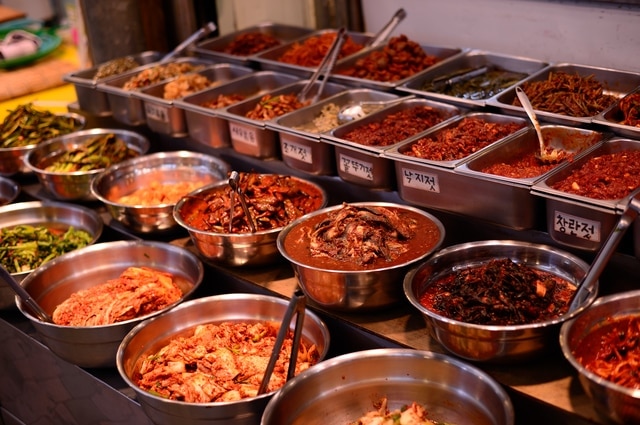

Dongmun Market, the largest market on Jeju Island, is often referred to as "Jeju’s Kitchen." It is a must-visit food spot, offering fresh seafood, local produce, daily necessities, and clothing across hundreds of stalls.
Established around 1945, this market has a long history and remains busy with both locals and tourists. You can find well-known Korean delicacies like kimchi, as well as Jeju’s famous specialties like mandarins and dekopon oranges at affordable prices.
This vibrant market is not just for shopping—it’s also a fantastic place for street food and a glimpse into Jeju’s local lifestyle. Be sure to stop by for souvenirs and a taste of authentic Jeju flavors!
Name: Dongmun Market (동문시장 / Dongmun Sijang)
Address: Dongmun Market, Jeju-si, Jeju-do, South Korea
10. Hallasan National Park (한라산 / Hallasan)
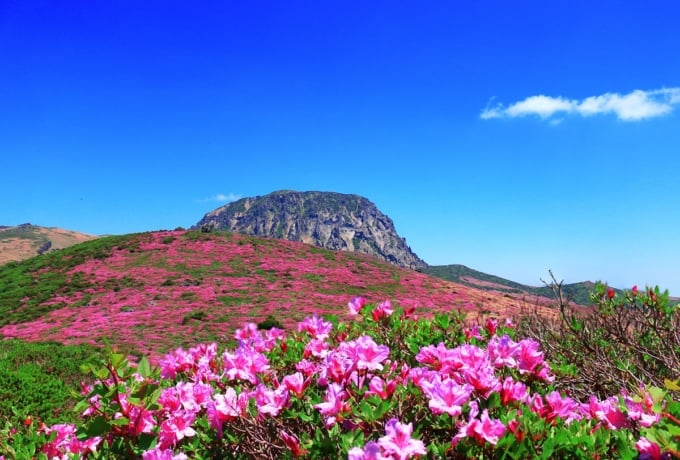
Hallasan, the highest mountain in South Korea at 1,950 meters, is a stunning national park on Jeju Island where visitors can enjoy a variety of plants that change with the seasons.
With over 1,800 species of rare plants, it is particularly famous for azaleas in early summer and vibrant autumn foliage. The park is also a protected natural area and was designated a UNESCO World Heritage Site in 2007.
The park is well-maintained with signs and trails, making it accessible for beginners. While it is a popular hiking destination, visitors who don’t want to hike all the way up can still enjoy the scenery by taking a walk along nearby trails from the 1,100m-high parking lot.
When visiting, it’s recommended to wear appropriate clothing as the weather can change suddenly.
Name: Hallasan National Park (한라산 / Hallasan)
Address: 2070-61 1100(Cheonbaek)-ro, Jeju-si, Jeju-do, South Korea
Official Website: Hallasan National Park
11. Yongduam Rock (용두암 / Yongduam)
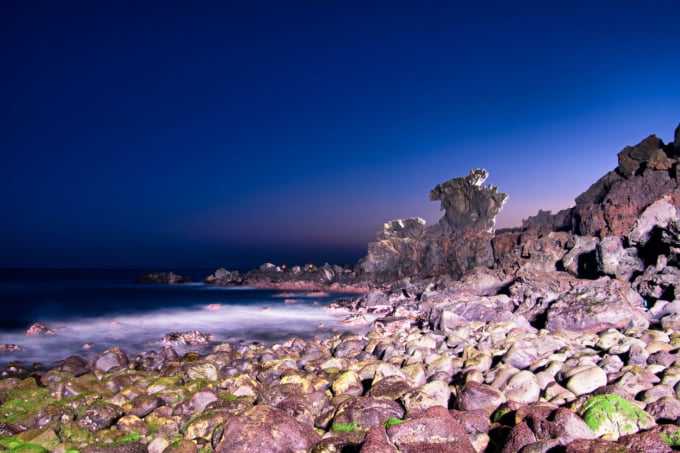
Located along the northern coast of Jeju Island, Yongduam Rock (Dragon Head Rock) is a stunning natural formation that resembles a dragon rising toward the sky. This 10-meter-high lava rock was created by the eruption of Hallasan Mountain, and over time, it solidified into its current dragon-like shape.
There are various legends about Yongduam Rock, such as a white horse turning into a dragon but being frozen into stone or a dragon trying to steal a magical pearl before being struck down. Learning about these stories beforehand can make the visit more exciting.
Sunset is the best time to visit, offering a spectacular view. Bring your camera to capture the breathtaking scenery.
Name: Yongduam Rock (용두암 / Yongduam)
Address: 15 Yongduam-gil, Yongdam 2(i)-dong, Jeju-si, Jeju-do, South Korea
12. Jeju Folklore and Natural History Museum (제주 민속자연사 박물관)
If you want to learn more about Jeju Island, visiting the Jeju Folklore and Natural History Museum is a great idea. This museum offers exhibits on Jeju’s plants, marine life, geology, insects, and folklore, showcasing the unique culture of Jeju compared to mainland Korea.
There are also many daily life tools on display, many of which are made from stone. Some exhibits extend outdoors, making it a fascinating place to explore. Visiting a local museum can enrich your understanding of a destination, making it a memorable cultural experience.
Name: Jeju Folklore and Natural History Museum (제주 민속자연사 박물관)
Address: 40 Samseong-ro, Jeju-si, Jeju-do, South Korea
Official Website: Jeju Folklore and Natural History Museum
13. Udo Island (제주도 우도 / Udo)

Located on the eastern tip of Jeju Island, Udo Island is shaped like a lying ox, which is how it got its name. This small island is accessible by ferry from Jeju and is famous for its breathtaking scenery. Since it's a compact island, you can explore it in a day at a relaxed pace.
Transportation options include shuttle buses, rental bicycles, and rental motorbikes. Udobong Peak offers a stunning view of the ocean, with lush green grass and beautiful walking trails. The island’s white coral beaches and emerald-green waters make it a popular destination among tourists. If you're lucky, you might even spot dolphins from the ferry on your way there.
Name: Udo Island (제주도 우도 / Udo)
Address: Udo-myeon, Jeju-do, South Korea
14. Eco Land Theme Park (에코랜드테마파크 / Eco Land)
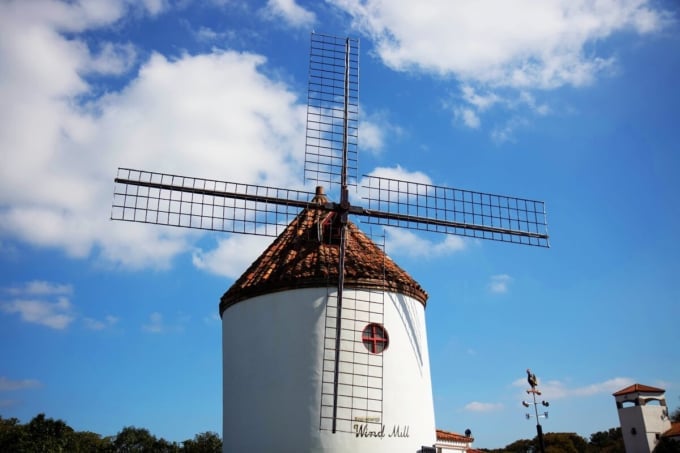
Eco Land Theme Park is a fast-growing tourist attraction in eastern Jeju, featuring lakes and wide grasslands. The park allows visitors to explore the mystical Gotjawal Forest, a unique and untouched natural area in Jeju.
A steam train runs through the park, stopping at five stations. Each area has a different theme, and visitors can hop on and off to explore or simply enjoy a full loop without getting off. It’s a great way to experience the park’s beautiful landscapes.
Name: Eco Land Theme Park (에코랜드테마파크 / Eco Land)
Address: Jeju-do, Jeju-si, 특별자치도, Jochon-eup, 번영로 1278−169, South Korea
Official Website: Eco Land Theme Park
15. Jeju Haenyeo Museum (해녀박물관 / Jeju Haenyeo Museum)
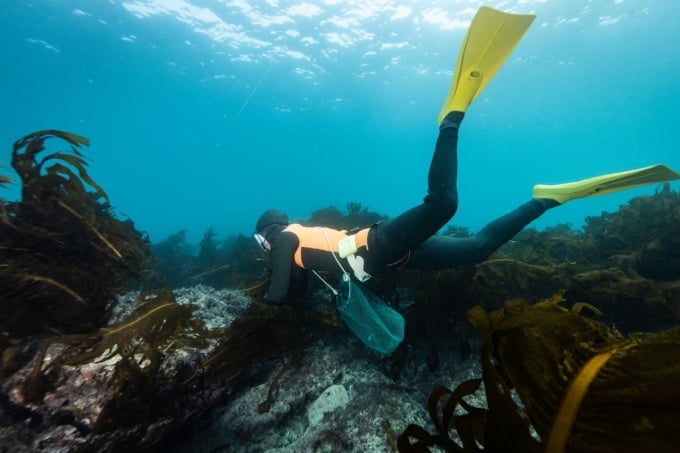
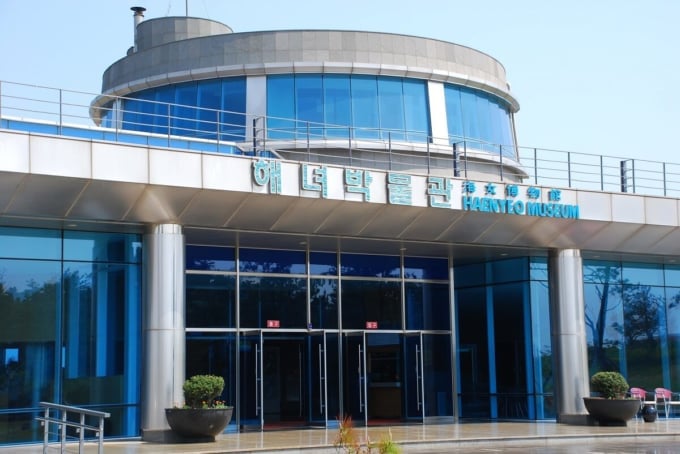
The Haenyeo (female divers) of Jeju are known for diving without oxygen tanks to catch abalone, sea urchins, and other seafood. In Japan, similar female divers are known as "Ama", but in Korea, they are called "Haenyeo", and their tradition continues on Jeju Island today.
At the Jeju Haenyeo Museum, visitors can learn about the lifestyle, clothing, food, and history of these remarkable women. The museum also highlights the differences between Japanese and Korean female divers.
In addition to exhibits, the museum features a rest area with an observation deck and a gift shop selling Haenyeo-themed souvenirs. Interestingly, Jeju’s Haenyeo community has a cultural exchange with Ama divers in Toba, Mie Prefecture, Japan.
Name: Jeju Haenyeo Museum (해녀박물관 / Jeju Haenyeo Museum)
Address: Hado-ri, Gujwa-eup, Jeju-si, Jeju-do, South Korea
Official Website: Jeju Haenyeo Museum
16. Manjanggul Cave (만장굴 / Manjanggul)
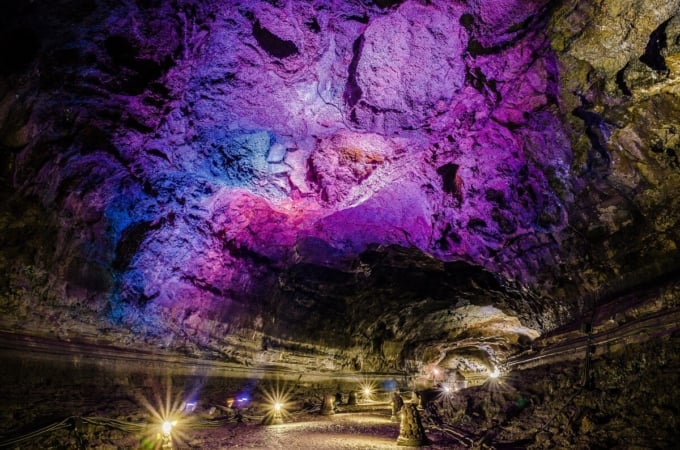
Located in northeastern Jeju, Manjanggul Cave is the longest lava tube in the world and a designated UNESCO World Heritage Site. It was formed 200,000 to 300,000 years ago from volcanic eruptions. The cave is illuminated, creating a mystical atmosphere, and its vast, towering formations will leave you in awe! You might also spot bats living inside the cave.
Since the cave has uneven paths, it's best to wear comfortable shoes. The temperature inside is cool, so bring warm clothing. Water droplets may fall from the ceiling, so wearing water-resistant clothes is recommended.
A round trip through the accessible part of the cave takes about an hour. Be mindful of your physical condition and avoid overexertion.
Name: Manjanggul Cave (만장굴 / Manjanggul)
Address: 182 Manjanggul-gil, Gujwa-eup, Jeju-si, Jeju-do, South Korea
17. Hamdeok Beach (함덕해수욕장 / Hamdeok Beach)
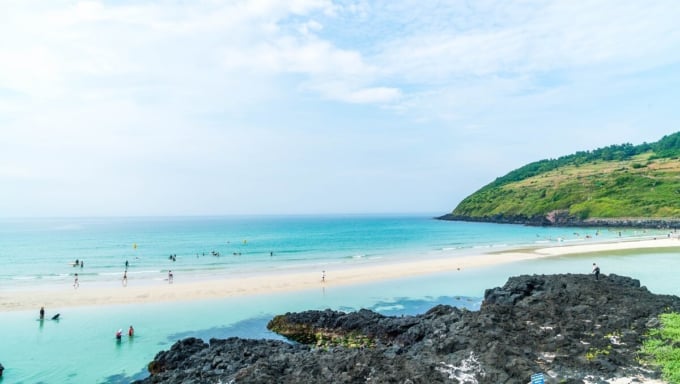
With its emerald-green waters and white sandy beach, Hamdeok Beach is one of Jeju’s most beautiful and popular coastal spots. Located near Jeju City, it features shallow waters, making it ideal for families with children. Visitors can rent parasols, relax by the sea, or enjoy water activities like snorkeling and kayaking.
The beach is officially open for swimming from July to August each year. With showers and nearby restaurants, you can comfortably spend a full day enjoying this stunning beach.
Name: Hamdeok Beach (함덕해수욕장 / Hamdeok Beach)
Address: Sinbuk-ro, Jochon-eup, Jeju-si, Jeju-do, South Korea
18. Seongeup Folk Village (성읍민속마을 / Seongeup Folk Village)
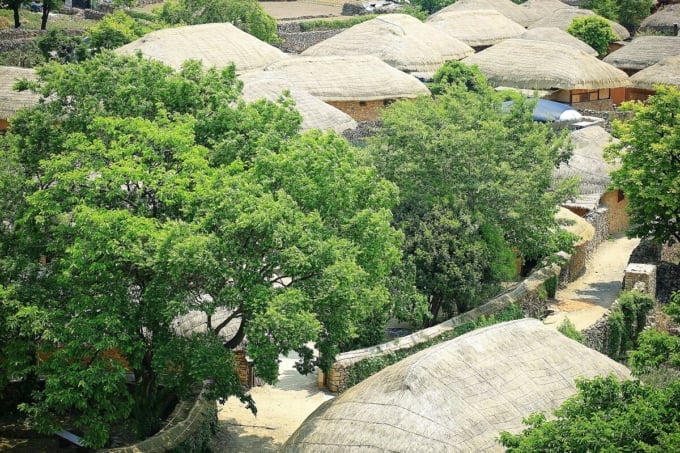
Seongeup Folk Village preserves the traditional appearance of an old Korean village, making it a valuable cultural heritage site. Here, visitors can see exhibits of traditional life and experience the atmosphere of the past.
While museums are great for learning, walking through real historic homes with a guided tour allows for a deeper appreciation of how people once lived. Since Jeju Island experiences strong winds, the village’s architecture is designed to withstand harsh weather—a unique feature worth observing.
Seongeup Folk Village was also a filming location for the famous Korean drama "Jewel in the Palace (Dae Jang Geum)", making it a must-visit spot for K-drama fans. Immerse yourself in this authentic cultural experience!
Name: Seongeup Folk Village (성읍민속마을 / Seongeup Folk Village)
Address: 30 Seongeupjeonguihyeon-ro, Pyoseon-myeon, Seogwipo-si, Jeju-do, South Korea
Official Website: Seongeup Folk Village
19. Cheonjiyeon Waterfall (천지연폭포 / Cheonjiyeon Pokpo)
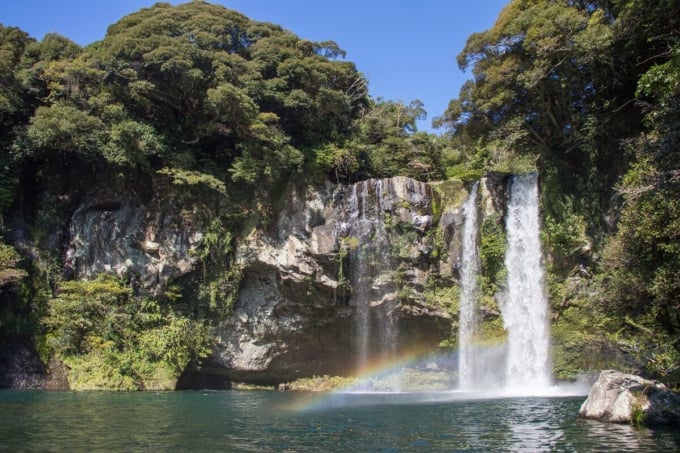
One of Jeju Island’s three major waterfalls, Cheonjiyeon Waterfall is a breathtaking sight where three cascades flow beautifully into a clear pool. According to legend, seven fairies descend from heaven at night to bathe in the waterfall, giving it its name. Since it’s located close to Seogwipo City, it’s a great place to visit and experience the refreshing negative ions from the falls.
The surrounding natural environment remains untouched, allowing visitors to admire rare trees, seasonal plants, and colorful flowers. The water is crystal-clear, and there's even a rumor that giant eels live in the waterfall basin!
At night, the waterfall is sometimes illuminated, so be sure to check in advance if you want to see this magical view.
Name: Cheonjiyeon Waterfall (천지연폭포 / Cheonjiyeon Pokpo)
Address: 2232 Jungmun-dong, Seogwipo-si, Jeju-do, South Korea
◎ Recommended Tourist Spots in Jeju Island
From famous attractions to newly popular destinations, this list introduces 19 must-visit spots in Jeju Island. If you're looking for an international travel destination close to home, Jeju is a perfect choice!
Since Jeju is near Japan, it’s a great getaway even if you have limited vacation days. Enjoy delicious and affordable Korean food, stunning beaches with fun activities, lush nature, and duty-free shopping—perfect for girls’ trips, family vacations, or solo adventures.
Jeju Island also offers a unique cultural and natural experience different from mainland Korea. Why not plan a trip and explore this amazing island?
RELATED ARTICLES
REGIONS
CATEGORIES
FEATURED ON Guide
-
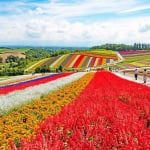
Where will you go for the summer vacation? Introducing recommended spots for domestic travel
-
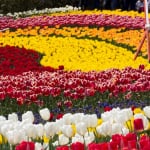
Kaizu City’s Recommended 7 Tourist Spots. Enjoy the Culture and History Nurtured by Wajū!
-
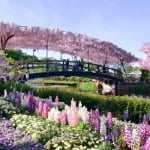
What Makes Ashikaga Flower Park So Special? A Treasure Trove of Photo-Worthy Spots!
-
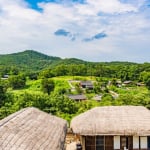
600 Years of Radiant Tradition: Korea’s Historic Villages of Hahoe and Yangdong
-
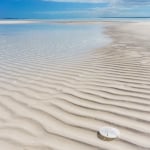
Two-Colored Seas and a Pink Beach! 4 Must-Visit Spots in North Eleuthera
MOST POPULAR ON Guide
-
 1
1Doha: Must-see Attractions in the Capital of Qatar
-
 2
2Toronto: 10 Things to do in this Picturesque Canadian City
-
 3
3Amarillo: A City Famous for It’s Amazing Canyons, Great History and Music
-
 4
4South Korea: Dazzling Scenery, Rich Culture and Fascinating History
-
 5
5Kuwait: A Country in Middle East Asia Famous for Hot Sand Dunes and Stunning Cityscape

